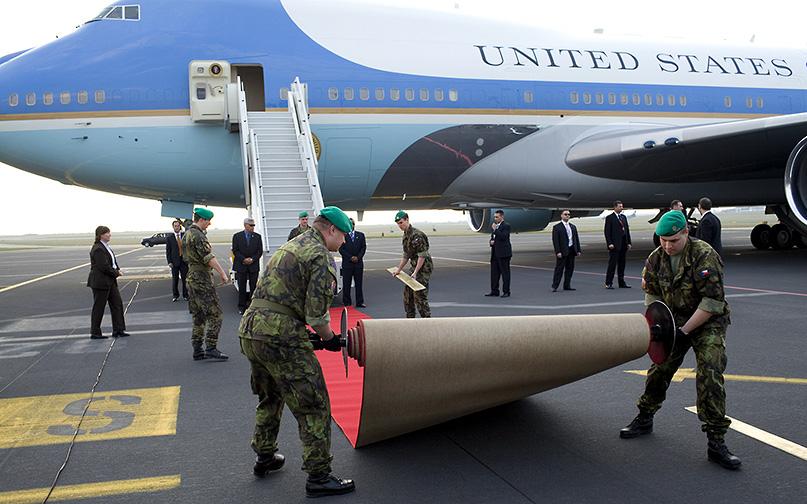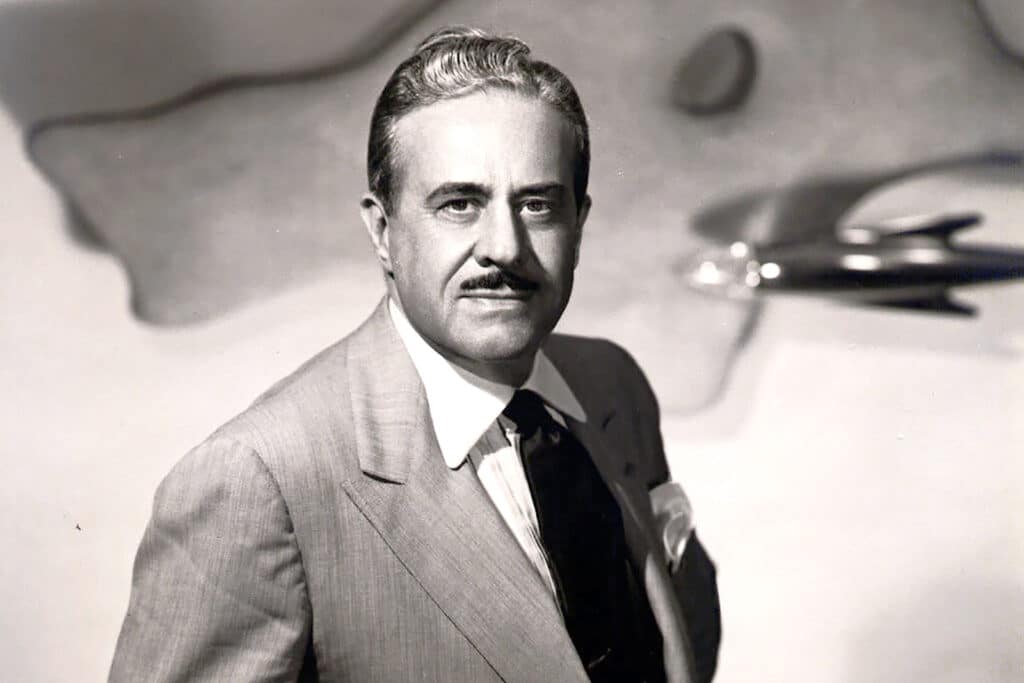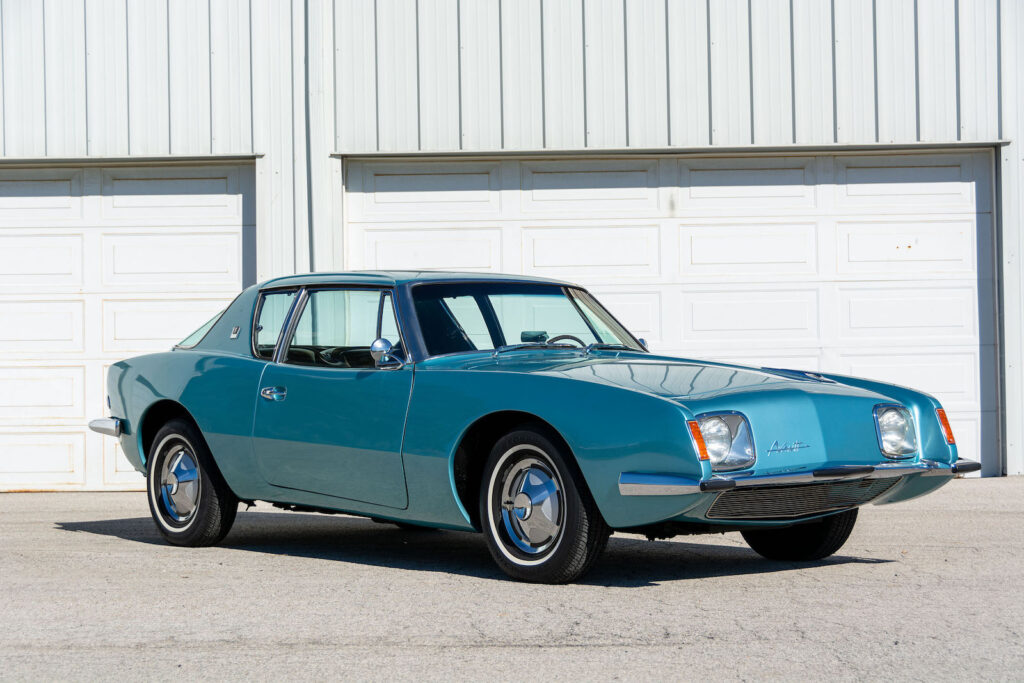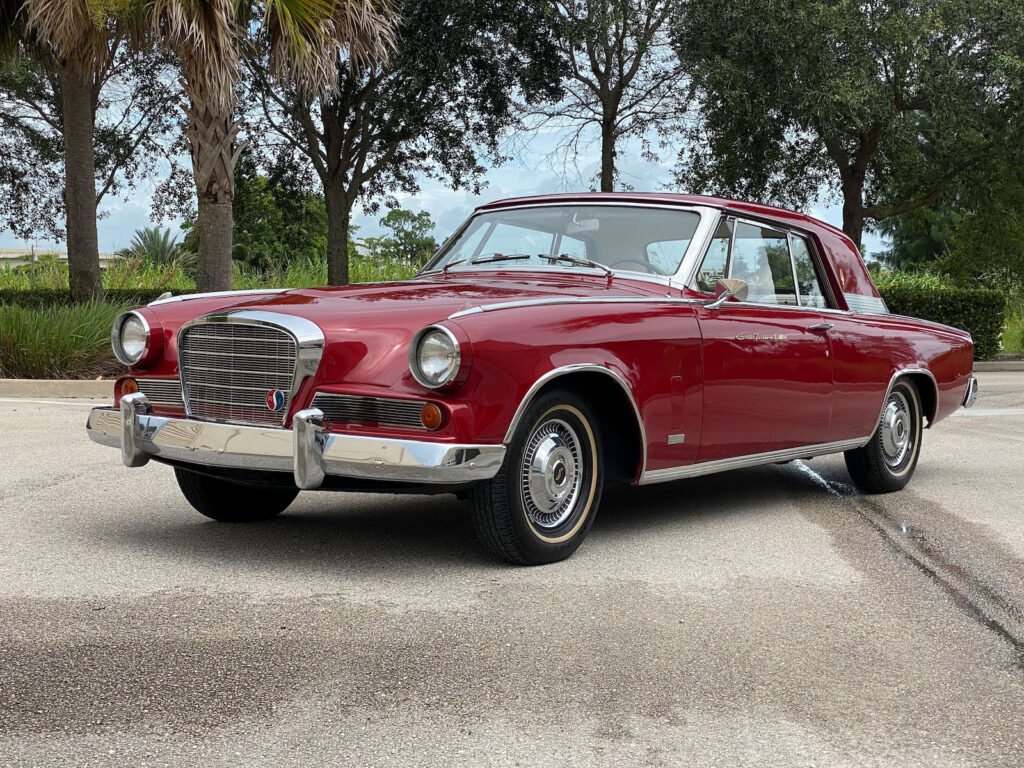Air Force One, the aircraft that carries the U.S. President around the world, is expected to retain the look developed 60 years ago by a designer with strong ties of the automobile industry.

The U.S. Air Force awarded a $3.9 billion contract to Boeing in 2018 for a pair of modified 747-8s to replace the existing pair of aircraft based on the 747-200B, which have been flying since the 1990s. But then-President Donald Trump wanted the livery originally developed for Air Force One by Raymond Loewy changed.
Trump’s design changes are proving costly to implement because the darker colors he demanded require more cooling on board the aircraft due to heat they absorb, according to Politico, a Washington-based news site.
Politico reported President Joe Biden elected to restore Air Force One to its classic color scheme for the two replacement planes.
New planes delayed
The Air Force One replacement program continues to face delays due to supply chain problems and a Boeing dispute with a subcontractor. Fiscal 2023 budget documents show a new plane may not be ready to fly a president until 2026, at least two years late.

The changes to the Air Force One’s livery would erase a design that was gifted to United States by an iconic designer from mid-century America, who also had a major impact on American business including the auto industry.
Loewy put his stamp on the American century
Raymond Loewy, the French-born industrial designer who designed everything from locomotives to delivery vans, and automobiles to Coca-Cola vending machines. Loewy, who also created the logos for Shell, Exxon and TWA, offered his services to President John F. Kennedy in 1962 to create a livery for the first “Air Force One,” according to Presidential historian Michael Beschloss.
Prior to that, Loewy created or helped develop several automotive vehicle designs. The automobile designs from Loewy’s independent studio started with the Hupmobile in the early 1930s. After World War II, Loewy and his chief automotive designer Virgil Exner, made Studebaker a contender with designs for cars such as the Studebaker Starlight, Starliner, Hawk and Avanti.

The company’s vehicles are widely considered some of the most striking of automotive designs of the post-World War II era even though Studebaker didn’t have the heft to compete with General Motors, Ford and Chrysler.
“When the first jet, a Boeing 707, was added to the presidential fleet in 1959, Dwight D. Eisenhower was content to let the plane’s nose and tail be painted with the Air Force’s easily visible “international orange” and the sides with the block-lettered label of an obscure bureaucracy: Military Air Transport Service,” Beschloss said in an article in the New York Times that was printed in 2015.
From automotive to presidential aviation
“In March 1962, Mr. Loewy, who had a house in Palm Springs, Calif., saw the presidential plane landing at the airport there. That evening, he told his friend Gen. Godfrey McHugh, Kennedy’s Air Force aide, that the aircraft, with its ‘rather gaudy’ orange graphics, looked ‘terrible.’ General McHugh explained that an enlisted man of little experience was responsible for the design.

“He added that a new Air Force One was being constructed. Mr. Loewy offered to make some suggestions, without taking a fee, on how the new plane’s appearance could be made more distinguished,” Beschloss wrote.
Kennedy accepted the offer, and the result was the striking design, with its vibrant United States of America signage along the side that has been used by American Presidents, Democrat and Republican, to great effect ever since the 1960s. Air Force One itself has gone through several iterations but the exterior design has remained true to the concept Loewy gifted to the United States back in 1962.
Designing corporate identities was a major part of Loewy’s practice. His modern and elegant design for the livery of JFK’s Air Force One transformed this particular Boeing 707 into an important element of the Kennedy administration’s global brand, according to the Museum of Modern Art (MOMA).
Loewy, according to MOMA, said Kennedy chose a red-and-gold design from the initial concept sketches presented to him at the White House but asked for it to be rendered in blue, which he said was his favorite color (and also that of the Democrats). Loewy recalled that Kennedy also chose the Caslon typeface — which resembles the one used in the heading of the Declaration of Independence — for the legend “United States of America.” The new Air Force One originally entered service in fall 1962.
"auto" - Google News
June 16, 2022 at 08:00PM
https://ift.tt/A8edxEl
Famous Air Force One Livery Created by Auto Designer to Remain on New Aircraft - The Detroit Bureau
"auto" - Google News
https://ift.tt/znbOwdv
https://ift.tt/HVYCgw1
Bagikan Berita Ini














0 Response to "Famous Air Force One Livery Created by Auto Designer to Remain on New Aircraft - The Detroit Bureau"
Post a Comment